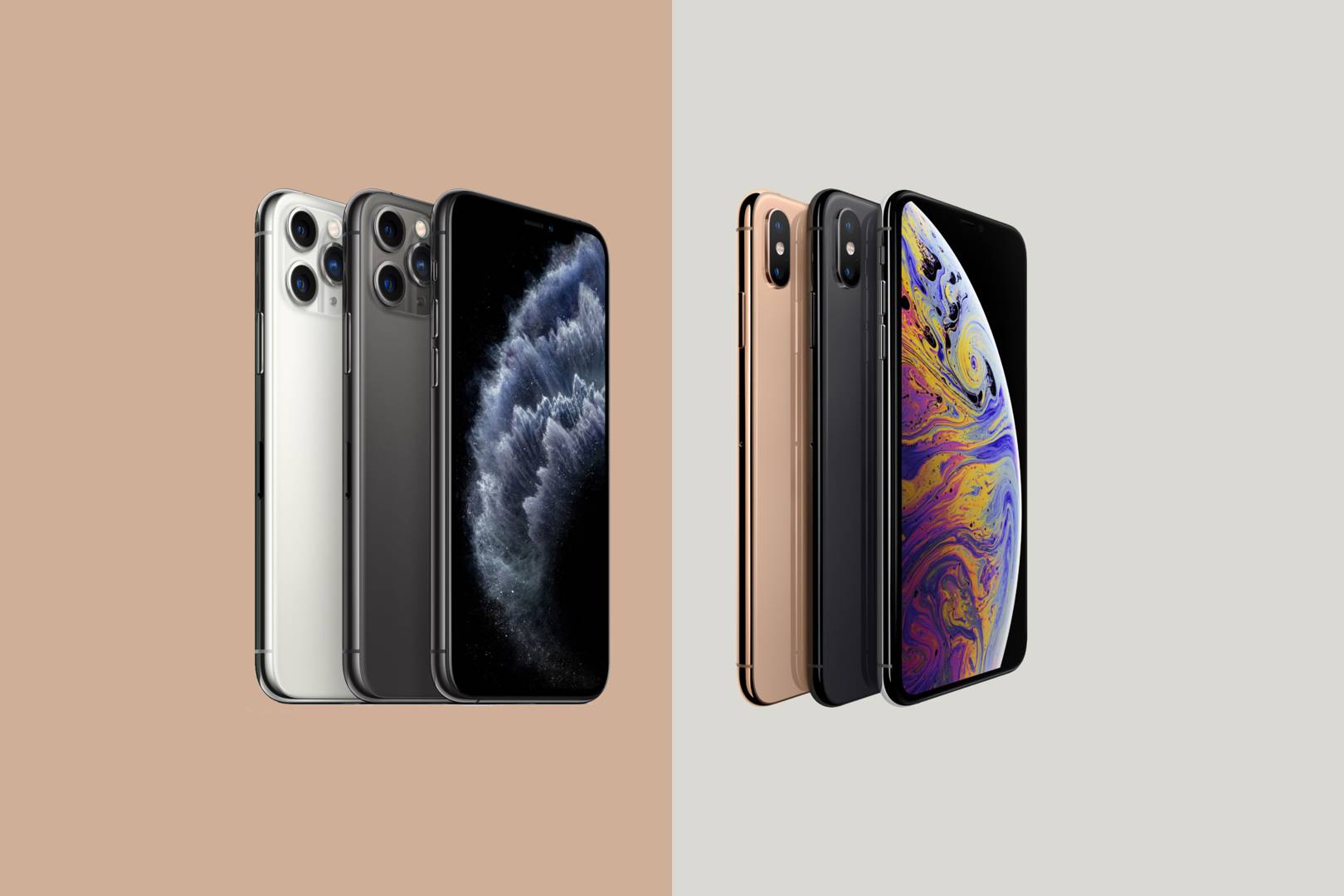

Apple has announced its iPhones for the 2019/2020 season: the iPhone 11, the iPhone 11 Pro and the 6.5-inch iPhone 11 Pro Max.
As ever, Apple detailed fistfuls of improvements and new features present in these new phones. But we are going to break it down and highlight only the parts that really matter if you are considering an upgrade from an iPhone XS, something older, or even an Android.
There are no 5G iPhones
Most major makers of Android phones have either released a 5G phone, or are planning to do so in the near future. Apple did not even mention the term “5G” in its iPhone launch. This was no huge surprise. We have known for some time the first 5G iPhone will likely arrive in 2020, not 2019.
5G is not actually a particularly compelling prospect for most of us right now. You have to pay more for the contracts and most don’t come with quite enough data to justify the extra speed. 5G is only available in a handful of UK cities. And we find 5G coverage to be very patchy, and speeds highly variable, even in the centre of London.
Nevertheless, upgrading to a 4G iPhone 11 may not be the wisest idea if you tend to buy one very high-end phone every 3-5 years. 5G will seem pretty mainstream in 2020-2021. Phone networks will do their best to make sure that happens too, as the infrastructure spend involved in 5G is huge.
The iPhone 11 is not an iPhone 11
Apple has also changed the semantic balance of power in this year’s iPhones. Last year the “iPhone XS” seemed the default iPhone. That baton has been passed to the iPhone 11, but this phone is actually an update of the more affordable iPhone XR, not the iPhone XS.
This is, to an extent, Apple following its audience. The iPhone XR sold in greater numbers than any other Apple phone over the last 12 months. We suggested Apple should focus on the iPhone XR range in a recent opinion piece. In one sense it has, even if there is no new “R” model at all.
The iPhone 11 gains a certain credibility in the loss of the “R”, becoming the default iPhone rather than an offshoot branch. But it has some of the same drawbacks as the previous lower-tier iPhones.
Its screen uses a lower-resolution LCD panel, not an ultra-high pixel density OLED. Its sides are aluminium rather than the steel seen in the iPhone 11 Pros and all the previous iPhone X and Xs models. And it does not have a telephoto camera lens.
Better battery for the Pros
Battery life appears to be one of the more compelling reasons to upgrade to the iPhone 11 series. Last year the iPhone XR was comfortably the longest-lasting of the new phones.
The iPhone 11 builds on this appeal, adding an extra hour of video playback off a full charge according to Apple’s own testing. Stamina gains in the Pro range are much more substantial, though.
Let’s use Apple’s video playback figures to compare. The iPhone X was rated for 12 hours, the iPhone XS 14 hours. These phones are widely considered to have fairly mediocre stamina for anyone approaching a “power user”. The iPhone XS Max was pegged at 15 hours, and the XR at 16 hours.
Our 2019/2020 league table looks completely different. Apple says the iPhone 11 Pro lasts for 18 hours of video, the iPhone 11 Pro Max 20 hours. And the iPhone 11 lasts 17 hours. This is initially confusing. How has the Pro range flipped things when all three new phones should benefit from the power efficiency of the new Apple A13 Bionic processor?
We need to look at one stat Apple did not mention, thickness, and extrapolate one Apple never puts on its spec sheets, battery capacity. The iPhone 11 Pros are 0.4mm thicker than the iPhone XS and XS Max. That is because Apple has increased the battery capacity of both by 20%.
If you are frustrated by the battery life of your iPhone X or iPhone XS phone, the iPhone 11 Pros seem to solve that issue.
The 11 series gets Night mode
Apple has also fixed another major iPhone complaint, the quality of these phones’ low-light image quality. The iPhone X and iPhone XS series lagged behind phones from the likes of Huawei, which was the first to put serious time and money into developing ultra-low light camera performance.
This seems to have finally been rectified with “Night” mode. It does more-or-less what the Google and Huawei modes do, combining a handful of exposures to radically improve dynamic range, detail and the perceived brightness of low-light photos.
It is arguably the single most important upgrade of the iPhone 11 range for keen mobile photographers. Ready to get annoyed? As this is primarily a software improvement, Apple could create a version of it for the iPhone XS and iPhone X ranges. But, for now at least, it is an iPhone 11-exclusive feature.
Apple says Night mode uses short exposures captured in anticipation of the shutter press, as well as ones shot after, which may well make it faster than the Huawei P30 Pro’s take.
And an ultra wide angle lens
All three iPhone 11s also have a 120-degree wide angle camera. These are, just like dedicated night modes, common in high-end Android phones. But this is the first time one has been added to an iPhone.
Wide-angle cameras are always fun to experiment with. They can emphasise the scale of your subject in a manner you’d never achieve by stepping backwards and using the standard-view camera. The night mode is still likely more important for more photographers, particularly as some of the most impressive new features concern video, not stills.
iPhone 11s have two rear cameras, the Pro models three, and all of them can shoot 4K video at 60 frames per second. This kind of consistency of standards is very “Apple”, and effectively continues where the iPhone X and iPhone XS ranges left off. Both let you shoot 4K, 60 frames with their dual rear cameras.
Extended Dynamic range is the new iPhone 11-only software feature for video. This involves shooting at 120fps for a 60fps result, combining two exposures with different exposure durations per frame to enhance shadow detail. Consider the physics of this and you’ll realise it will only work particularly well in great lighting, though.
Two of the most important iPhone 11 upgrades are the Night mode and the fact that the “blurry background” Portrait mode can now be used to take pictures of objects (and, yes, pets) as well as people.
This is thanks to the ultra-wide camera. As it covers the field of view of the main 28mm lens (and more besides), it lets the iPhone 11 create stereoscopic depth maps. This is the technique the first “background blur” phones used. The iPhone X and iPhone XS range Portrait modes were relatively unusual in that they relied on machine learning-based facial recognition, not the parallax effect.
All three phones also have better selfie cameras than the iPhone X and iPhone XS. Apple used 7-megapixel selfie cameras in 2016’s iPhone 7 and continued with the same core spec until now, switching to 12-megapixel sensors.
These will capture, you guessed it, 4K 60 frames per second video just like the rear cameras. And there’s a new 1080p 120fps mode that let Apple dip into the world of cringey marketing portmanteau with the term “slofie”. A Slofie is a slow motion selfie, to be seen spattered all over social media from September 20, when the phones are released.
More power than last year
And are these phones more powerful too? Yes, but the use of the new Apple A13 Bionic processor may make you question the validity of the “Pro” series phones.
The Apple A13 Bionic has a roughly 20 per cent more powerful CPU and 20 per cent added GPU power over the A12 Bionic of the iPhone XS and iPhone XS Max. This is a respectable boost in power, but less than we’ve seen in previous years. That the £729 iPhone 11 uses the same processor as the Pro models lessens the impact of those more expensive models.
There simply isn’t the same gap in power seen in the iPad and iPad Pros, which have “X” series CPUs. And do we need it the extra power? No. These iPhone 11 models didn’t gain Apple Pencil support to make use of taxing creativity apps. And those big art apps and somewhat comparable music production suites just make more sense on a larger canvas.
Even when demonstrating what is perhaps the most taxing game in the first wave of Apple Arcade titles, the Dark Souls-inspired Pascal’s Wager, the developer said the aim was 60fps performance. This tell us the actual visual fidelity is geared towards lower-end hardware. We don’t need 60fps mobile games.
Divisive design – and watch out for the iPhone XR
There has already been some minor backlash online around the iPhone 11s’ design. The Pro models are thicker and heavier than last year’s XS phones, and the look of the new camera housing has raised eyebrows.
Apple has attempted to “style out” that the new camera array makes the housing bloom out of the rear panel slightly, using a single milled piece of glass that avoids seams. The combined effect may seem unsightly if you are used to the low-key rear of an iPhone XS Max.
One other important point is liable to get lost in the discussion of new specs and design changes: the new range’s pricing. The weakened pound has done UK buyers no favours, with sterling figures rising above the dollar count in the US. But Apple’s more affordable iPhones are more attractive than they have been in a long time.
Apple’s iPhone XS and XS Max have been discontinued, but the iPhone XR has not. This phone now costs £629, only slightly more expensive than the Samsung Galaxy S10. And the iPhone XR is more powerful by most metrics.
If only the iPhone XR gained the Night photography mode of the iPhone 11, it would be the smart choice for many. While the £629 price itself is in no way groundbreaking, the phone is far more compelling than the “budget” £599 iPhone 8 seemed last year.
The iPhone 11 costs marginally less than the iPhone XR did at launch too, despite UK-wide price increases, at £729 instead of £749. Prices for the other phones in the 2019 range track fairly well with those of the iPhone XS, though. The iPhone 11 Pro starts at £1,049, the iPhone 11 Pro Max £1,149.
Verdict
These may not be the prettiest iPhones ever, but Apple does seem to have listened more than it has in the past. People complained the iPhone XS battery didn’t last long enough. The iPhone 11 Pro should now beat many rival Androids, as well as the iPhone X and iPhone XS.
The series also appears to have finally caught up with Samsung, Google and Huawei by introducing a dedicated Night camera mode that will radically increase shooting flexibility. And the sensible middle-ground iPhone 11 has been given the naming prominence it deserves.
Those upgrading from an iPhone several years old should also consider the iPhone XR, though. Aside from the lack of the Night camera mode it is not dated in any significant way. Its price, and that of the iPhone 11, are clearly intended to attract those who might normally buy an Android. At a time when Apple’s growth in iPhone sales has slowed, this kind of humility may prove sensible.
More great stories from WIRED
💩 Japanese self-cleaning toilets are conquering the West
📱 The new Android 10 features that will transform your phone
📖 The best sci-fi books everyone should read
🍫 The foods you’ll really need to stockpile for no-deal Brexit
♻️ The truth behind the UK’s biggest recycling myths
read more at https://www.wired.co.uk/ by Andrew Williams
Tech









